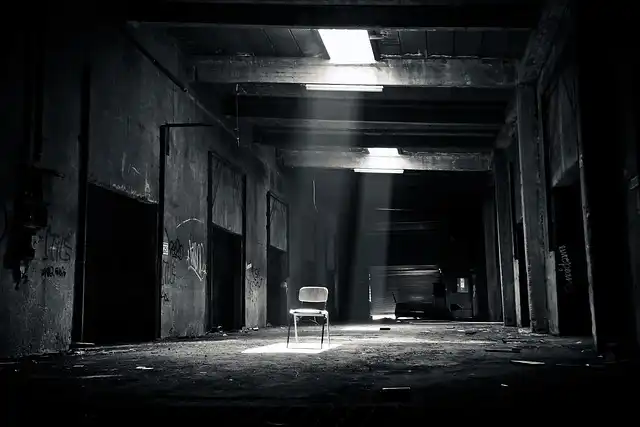Estonia’s Neo Factory: Rare Earth Magnet Production & Defiance

Neo's Narva factory in Estonia is producing rare earth magnets for EVs and wind turbines, defying Russian hostility and reducing reliance on China. It boosts Europe's green transition and industrial competitiveness.
The digital transformation that has taken place in the Estonian federal government over recent years is currently being implemented in Narva with Neo’s manufacturing facility. What started with a supposed Tiger’s Leap by the state to attach every college in the nation to the web as very early as 1996, led– together with the birth of Skype, Wise and Bolt– to a very proficient workforce.
Estonia’s Digital Transformation and Neo’s Role
The task stands for an act of defiance against Russian hostility. It’s a bid to respond to China’s chokehold over vital minerals that is Beijing’s secret weapon in its intensifying profession battle with the USA. And it’s a ballot of optimism concerning European sector, its backers claim.
“With this financial investment, Estonia is now at the actual heart of Europe’s unusual earth magnet production,” Michal said. “This plant proves that it’s feasible for international resources, European support and Estonian know-how ahead with each other.”
Neo isn’t fretted concerning that, Suleman stated. We’re certain in the alliance’s feedback and we hope for the existing battle to end as soon as possible.”
“Narva used to be a peaceful place at the end of Europe. Young people were moving away,” said Aivar Virunen, the plant’s production manager and Neo’s very first staff member in Narva. Neo isn’t worried concerning that, Suleman stated.
Neo’s Confidence and Future Prospects in Narva
Ending up being a cog in Europe’s push to amaze the cars and truck sector and grow the wind power sector is very much according to that technique– almost as high as embracing the euro or exchanging the Russian power grid for the European one.
Neo’s factory– only the very first phase of a potentially much larger footprint in Narva– will certainly support 300 work, with the prospective to expand to around 1,000. It will resource its materials of neodymium, an unusual earth used in permanent magnets, from Australia.
The first stage of the new factory, possessed by Neo Performance Products, will certainly can creating magnets for 1 million electric lorries and 1,000 generators for the wind market annually. These magnets make electrical systems much more effective, and need is grabbing swiftly.
European Compensation President Ursula von der Leyen even brought a magnet made in Narva to the G7 top in Canada in June, where she commended Head of state Mark Carney, in acknowledgment of Neo’s Canadian origins.
On a spending plan of EUR100 million, Neo received EUR17 million from the EU’s Simply Change Fund, implied to entice financial investments to deindustrializing areas that require to move work away from fossil fuel markets. In Estonia only Ida-Virumaa receives the subsidies, to the song of EUR340 million.
EU Support and the Green Transition
Maive Rute, herself Estonian, one of the European Compensation’s the majority of elderly civil servants on commercial policy, claimed the Narva center “shows that Europe can not only develop however also produce. It can create sustainably, and it can lead” the way in the eco-friendly change.
“We assessed lots of areas,” Neo chief executive officer Rahim Suleman told POLITICO. The firm opted for Narva when it “took a look at the kind of electronic capabilities and the speed upon we might do this,” he described, referring to the fast permitting of the project.
Narva and its environs, with their huge Russian-speaking population, might benext in Moscow’s sights after Crimea, Donbass and the rest of Ukraine. Should Russian President Vladimir Putin order his soldiers into Estonia, the community would certainly be one of their very first targets.
Narva: A Strategic Location Amidst Geopolitical Tensions
By 2035, Tallinn wishes to have actually phased out shale oil. For over a years the market has remained in sluggish decrease as the stretching plants developed throughout Soviet profession times have rarely undertaken improvement, not to mention development.
As they are made with uncommon earth components– metals whose removal and refining is dominated by China– there was no commercial-scale manufacturing in Europe prior to Neo established its sights on this city exactly on the Russian border.
“The future of Europe’s competition is below,” Estonian Head Of State Kristen Michal stated at the opening of the manufacturing facility last month. On the day of the ceremony, Russian armed forces jets intruded into Estonian airspace.
The task represents an act of defiance against Russian aggression. And it’s a ballot of optimism regarding European market, its backers claim.
Estonia’s Integration and Security Concerns
When it comes to Estonia, holding a manufacturing facility that is unique outside Asia is specifically the sort of much deeper integration the country constantly seeks with the EU and NATO. It was occupied by Moscow for practically six years throughout the Cold Battle, subjected to unplanned expulsions and russification. Really familiar with Russia’s imperialist propensities, Tallinn has actually always viewed any type of policy via a lens of safety and prevention– also in the case of factories.
“Narva used to be a quiet place at the end of Europe. Youngsters were relocating away,” said Aivar Virunen, the plant’s manufacturing manager and Neo’s initial employee in Narva. A lifelong resident and former machine designer in the oil shale sector, he’s delighted regarding the pledge of a revival.
1 digital transformation2 Estonia
3 European industry
4 Narva
5 Neo factory
6 rare earth magnets
« Macron’s Crisis: Lecornu’s Reappointment & French Political TurmoilIRS Furlough Back Pay Controversy & Trump Admin »
